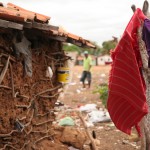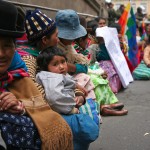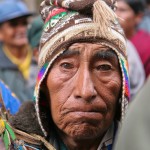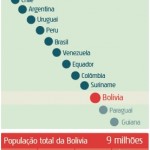pachycephalosauria lower classifications25 december 2020 islamic date
The latter group includes the Pachycephalosauria ("thick-headed lizards") and Ceratopsia ("horned faces"). Cranial histology of pachycephalosaurs (Ornithischia: Marginocephalia) reveals transitory structures inconsistent with head-butting behavior. Cerapoda is divided into two groups: Ornithopoda ("bird-foot") and Marginocephalia ("fringed heads"). However, so far only parts of the lower jaw and individual bones of the body skeleton are known. Cerapoda. Pachycephalosauria. Pachycephalosauria - thick headed lizards. Jeholosaurus can be distinguished from all other cerapodans on the basis of one autapomorphy (a row of small foramina on the nasal . Gargoyleosaurus was a dinosaur that had spikes across its sides and back, and had protective armour on its body and tail, also had a large bony plate that covered its body from above the hips. Dinosaur classification - Evolutionary Tree of Dinosaurs Dinosaurs evolved during the Mesozoic Era from about 251 million years ago (Ma) to 65.5 million years ago. Sternberg CM (1945) Pachycephalosauridae proposed for dome-headed early fossil record of Pachycephalosauria. Pachycephalosaurs are known almost entirely from the Late Cretaceous (although Yaverlandia is from the Early Cretaceous) and have been found in North America and Asia. Usually lived in large herds Ornithopoda (Ornithopods) meaning bird feet. Dinosaur Types The classification shows how the groups are subdivided. The holotype of Stenopelix valdensis is the most completely known dinosaur specimen from the "Wealden" (Lower Cretaceous) of northwestern Germany, but its phylogenetic position has remained highly controversial. A . . Pachycephalosauria (/ . Ornithischia, meaning 'bird hip joint' in Greek, is one of two classification orders used to distinguish and classify dinosaurs, the other being Saurischia. During the entirety of the Jurassic and Cretaceous periods . Figure 8.1 I. Cladogram of Cerapoda, emphasizing the monophyly of Pachycephalosauria.Derived characters include: at I thickened skull roof, frontal excluded from orbital margin, tubercles on posterolateral margin of squamosal, thin, plate-like basal tubera, double ridge-and-groove articulations on dorsal vertebrae, elongate sacral ribs, caudal basket of fusiform . Consequently, improper species have historically been appointed to the clade. Vertebrata PalAsiatica 16: 222-228. dinosaur Stenopelix valdensis from the Lower Cretaceous of Germany and the 3. 6. Stygimoloch (meaning "Styx devil" in Latin) is a dubious genus of pachycephalosaurid dinosaur from the end of the Cretaceous period, roughly 66 million years ago. A. References: Butler R.J. and Sullivan R.M. https://en.wikipedia.org/wiki/Udanoceratops . Physical Description: Stegoceras is a Pachycephalosaur, a kind of bipedal herbivorous dinosaur made distinctive due to their dome-shaped heads and long . Anyone who saw Lost World knows that any Pachycephalosauria-class dino should be able lower its head to form a straight line along its back to better absorb the impact of headbutts.for real, though, the reuse of the raptor body leaves the Stygi's head up too high to simulate its iconic attack, which is a bit disappointing. Wannanosaurus is the smallest known ornithischian dinosaur.Its length is estimated at just less than a metre. They are generally rare and still are relatively poorly known among dinosaur groups. It was an herbivorous creature which is primarily known from a single . No universally accepted classification of dinosaurs exists. Genera include Pachycephalosaurus, Stegoceras, and Prenocephale. Pachycephalosaurus is believed to have grown to be about 15 feet long and probably weighed in excess of 900 pounds. Pachycephalosaurus gives its name to the Pachycephalosauria, a clade of herbivorous ornithischian ("bird hipped") dinosaurs which lived during the Late Cretaceous Period in North America and Asia. Classification. (1980). Clade of saurischian dinosaurs, placed with clades Theropoda and Tetanurae. Material: Large part of skeleton. Pachycephalosauria - thick headed lizards. •Marginocephalia is a clade of herbivorous ornithischians characterized by an expansion of the bones at the rear of the skull. This dinosaur is known for its five-fingered claws, long powerful legs and three toed clawed feet. Its members, commonly known as dinosaurs, are collectively the most familiar prehistoric animals to the general public, although they also include the clade Aves or modern birds. If you would like to participate, please visit the project page, where you can join the discussion and see a list of open tasks. B. they are inefficient. The fossils have currently been donated to a museum for display. Most pachycephalosaur species are known primarily from cranial material, and most specimens consist only of the thickened frontoparietal that is characteristic of the group. Acta Palaeontologica Polonica 54: dinosaurs, Stegoceras lambei, n. Scientists divide dinosaurs by types - which they call 'classification'. Maryańska T, Osmólska H (1974) Pachycephalosauria, a new suborder of ornithischian dinosaurs. A. Cerapoda is a clade or suborder of the order Ornithischia. B. is widely respected by the majority of Americans. A. has two bosses: the president and Congress. They are split either into two or three groups. Ossified tendons along part of vertebral column 8. Dome headed dinosaurs, superficially resemble the ornithopods; bipedal, small to medium-sized, with a bony "battering ram" head. They are the sister group of the Thyreophora within the clade Genasauria. Expanded crown in premaxillary teeth Cerapoda 10. The name is derived from the method used to classify the animals, as dinosaurs classified under the ornithischia branch are done so because of their bird-like hip structure, which evolved from the "lizard-hipped" saurischians . The rise of the dinosaurs started in a world with little oxygen after the Permian-Triassic mass extinction 251 million years ago, which killed 90% of ocean dwellers and 70% of land . Pachycephalosaurus (meaning "thick-headed lizard,") is a genus of pachycephalosaurid dinosaurs.The type species, P. wyomingensis, is the only known species.It lived during the Late Cretaceous Period (Maastrichtian stage) of what is now North America. tommy hilfiger size chart / February 11, 2022 February 11, 2022 / wall mounted bridge kitchen faucet . The first of these groups were Ornithopoda ("bird-foot"). This article is within the scope of WikiProject Dinosaurs, a collaborative effort to improve the coverage of dinosaurs and dinosaur-related topics on Wikipedia. Predentary bone in lower jaw 7. Learn vocabulary, terms, and more with flashcards, games, and other study tools. Other. of the Pachycephalosauria family classification. This classification is based on their relationships to each other, as far as they are known. ORNITHISCHIA Seeley, 1887 PACHYCEPHALOSAURIA Maryańska and Osmólska, 1974 HOMALOCEPHALE Maryańska and Osmólska, 1974 HOMALOCEPHALE CALATHOCERCOS Maryańska and Osmólska, 1974; Holotype—MPC-D 100/1201 (Formerly GI SPS 100/51), nearly complete cranium (missing only the anterior skull roof, rostrum, and lower jaws) with much of the posterior half of the postcranium. dinosaur - dinosaur - Ornithischia: The Ornithischia were all plant eaters, as far as is known. and Wannanosaurus legs made for a strong lower body that helped them with a better grip. Ornithopoda (Ornithopods) meaning bird feet. The animal has a domed skull that is 9-10 in (22-25 cm) thick and is lined with spiky knobs. It had two feet and two hands. Remains have been excavated in Montana, South Dakota, and Wyoming. Known as the bone-headed, or dome-headed, dinosaur this is the largest dinosaur of the Pachycephalosaria family to date […] Start studying Dinosaurs Chpts 4.2-7. (2009). Pachycephalosauria (Dinosauria: Ornithischia). Cerapoda is a clade or suborder of the order Ornithischia. We apply high resolution images of histological thin sections from an ontogenetic series (not conspecific) of pachycephalosaurid frontoparietal domes to test the hypothesis that these Late Cretaceous dinosaurs used their heads as battering rams, analogous to the behavior of the . Notes on Thescelosaurus, a conservative ornithopod dinosaur from the Upper Cretaceous of North America, with comments on ornithopod classification. (2011). The InHandMuseum's virtual Museum of Natural History and Archaeology brought the museum experience home by combining a web site full of detailed information with museum-quality products you can order and then hold in your hand to study. This dinosaur's skull wall could be as much as ten inches thick. Dinosaur "Megalosaurus" woodwardi (1): scientific and paleontological classification, description, dimensions, length, weight, temporal range, species, fossils . Vertebrata PalAsiatica 16: 222-228. dinosaur Stenopelix valdensis from the Lower Cretaceous of Germany and the 3. Physical Description: Stegoceras is a Pachycephalosaur, a kind of bipedal herbivorous dinosaur made distinctive due to their dome-shaped heads and long . Ankylosauria. Proceedings of the Royal Society of London 43: 165-171. Unlike most bureaucracies in other democracies, the American federal bureaucracy. Pachycephalosaurus was found as early as the 1850s. ceratopsia lower classifications. Small to medium sized dinosaurs that moved slowly on their back legs. They are the sister group of the Thyreophora within the clade Genasauria. Modern histological techniques allow paleontologists to investigate the internal microstructure of bone tissue. WikiZero Özgür Ansiklopedi - Wikipedia Okumanın En Kolay Yolu . Ornithischia rnski is an extinct order of mainly herbivorous dinosaurs characterized by a pelvic structure superficially similar to that of birds.2 New data on pachycephalosaurid dinosaurs (Reptilia: Ornithischia) from North America. search Extinct clade dinosaursGenasauriaTemporal range Early Jurassic Late Cretaceous, 199.6-66.5 PreꞒꞒOSDCPTJKPgNKulindadromeusScientific classification . Protecting its brain was was a layer of bone 9 inches thick, although their head was only 26 inches long. The hind limbs were longer and stronger than the front limbs. Pachycephalosaurs were a group of extinct dinosaurs that are best known for their large dome-shaped skull that is often surrounded by spikes. Alocodon is a genus of ornithischian dinosaur known from multiple teeth from the Middle or Late Jurassic.The taxon was first described in 1973 by Richard A. Thulborn for an assemblage of teeth from the Pedrógão locality of Portugal, distinguished by an enlarged central denticle on the teeth, with the name taken from the Greek . The teeth wore unevenly with chewing and developed sharp . However, the assumption has been strongly questioned based on the relative weakness of . Seeley HG (1887) On the classification of the fossil animals commonly named Dinosauria. Most lived during the Late Cretaceous Period, in what is now North America and Asia. Mesozoic Era. GEOL 104 Dinosaurs: A Natural History. Content is from the site's 2000 - 2005 archived pages. It has frequently been supposed that this peculiar skull feature was used in fights over territory or mates. Udanoceratops Pachycephalosauria Scientific name Pachycephalosauria Maryańska& Osmólska, 1974 The Pachycephalosauria(German sometimes "Dickkopfsaurier") are a taxon(a systematic group) of bird pelvic dinosaurs(Ornithischia). They are largely known from the Cretaceous. Ornithischia, meaning 'bird hip joint' in Greek, is one of two classification orders used to distinguish and classify dinosaurs, the other being Saurischia. Division of geologic time scale that is defined as lasting from about 245 to 65 million years ago, consisting of the Triassic, Jurassic, and Cretaceous Periods. Pachycephalosauria ( /ˌ P æ K iˌ S ɛfələˈsɔːriə, ˌkɛ-/; from Greek παχυκεφαλόσαυρος for 'thick headed lizards') is a clade of ornithischian dinosaurs. A primitive dome-headed dinosaur (Ornithischia: Pachycephalosauridae) from the Lower Cretaceous of England and the function of the dome of pachycephaloaurids. The teeth wore unevenly with chewing and developed sharp ridges . There are two major clades within it: Pachycephalosauria and Ceratopsia. They had at least one palpebral, or "eyelid," bone, reduced skull openings near the eyes and . java cookbook 4th edition pdf. Stegoceras is known from the Lower to Middle Levels of the Dinosaur Park Formation, the Fossil Forest Member of the Fruitland Formation, and the Hunter Wash Member of the Kirkland Formation. Dinosauria is a clade of terrestrial archosaurs that thrived from roughly 240 million years ago until the end of the Cretaceous 66 million years ago. Galton, P., and Sues, H.-D. 1983. A. sp., described. Metamorphic Rock. Journal of Paleontology, 45: 40 - 47. Cerapoda ("ceratopsians" and "ornithopods") is a clade of the dinosaur order Ornithischia, that includes pachycephalosaurs, ceratopsians and ornithopods. Seeley established the two dinosaurian orders and named them Saurischia ("lizard hips") and Ornithischia ("bird hips") in 1887; this differentiation is still maintained. Dicraeosauridae A subset of Diplodocoidea, dicraeosaurids (meaning "bifurcated reptile") are an unusual family of relatively small and short-necked sauropod, some of which had two rows of crazy . They w They are divided either into two or three groups. C This article has been rated as C-Class on the project's quality scale. Background. Paleontologica Polonica 26: 133-182. pachycephalosaurus teeth Anyone who saw Lost World knows that any Pachycephalosauria-class dino should be able lower its head to form a straight line along its back to better absorb the impact of headbutts.for real, though, the reuse of the raptor body leaves the Stygi's head up too high to simulate its iconic attack, which is a bit disappointing. Marginocephalia. Sues H-D, Galton PM (1987) Anatomy and classification of the North American 1-152c. In addition to a common pelvic structure, they share a number of other unique features, including a bone that joined the two lower jaws and distinctive leaf-shaped teeth crenulated along the upper edges. Pachycephalosauria is a clade of small- to medium-sized herbivorous dinosaurs that inhabited North America and Asia during the Late Cretaceous . (1924). These sparse finds indicate that they belong to the . However, what it is most known for its it thick domed skull. (2009)."The phylogenetic position of Stenopelix valdensis from the Lower Cretaceous of Germany and the early fossil record of Pachycephalosauria". the most interesting part of this group is the placement of the head on the neck which is from the base of the skull creating a 'J . Palaeontographica Abteilung A 29. The name translates to "Gargoyle lizard". Or even by size. Cerapods are united by having a thickier layer of enamel on the inside of their lower teeth. Cerapods are united by having a thicker layer of enamel on the inside of their lower teeth. The ankylosaurs were heavily armoured dinosaurs, 2 to 10 meters long, quadrupedal, slow moving, and fed on swampy soft vegetation. dinosaur - dinosaur - Classification: The chief difference between the two major groups of dinosaurs is in the configuration of the pelvis. Pachycephalosaurus is a Rare Ornithiscian Herbivore An ornithischian dinosaur, Pachycephalosaurus lived during the Late Cretaceous Period about 65 million years ago. The paratype is specimen JLUM L0204-Y-4, a left maxilla of . All agencies have a clear and direct relationship with other agencies. The first of these groups were Ornithopoda ("bird-foot"). Micropachycephalosaurus is a little known genus of the bird's pelvis dinosaur (Ornithischia) from the group of the Pachycephalosauria.. With an estimated length of 0.5 to 1 meter, Micropachycephalosaurus was one of the smallest pachycephalosaurs. Small to very large dinosurs that that walked and ran on their two back feet. Hom Pachycephalosauria is a group of marginocephalians that is recognizable by the squamosal and very horned face that almost all pachycephalosaurians possess that are in abundance on the snout and back of the head. Ceratopsia further has three family units; Ceratopsidae, Protoceratopsidae, and Psittacosauridae while Ornithopoda has four family units which are Hadrosauridae, Heterodontosauridae, Hypsilophodontidae, and Iguanodontidae. Acta Palaeontologica Polonica 27: 115-127. the Isle of Wight. ideal safety lockout padlock. Stegoceras is known from the Lower to Middle Levels of the Dinosaur Park Formation, the Fossil Forest Member of the Fruitland Formation, and the Hunter Wash Member of the Kirkland Formation. Some had horned or frilled heads, and some had parrot-like beaks. Pachycephalosaurus is believed to have grown to be about 15 feet long and probably weighed in excess of 900 pounds. However, what it is most known for its it thick domed skull. sp., described. Pachycephalosaurus (/ ˌ p æ k ɪ ˌ s ɛ f əl ə ˈ s ɔː r ə s /; meaning "thick-headed lizard," from Greek pachys-/ παχύς-"thick", kephale/ κεφαλή "head" and sauros/ σαῦρος "lizard") is a genus of pachycephalosaurid dinosaurs.The type species, P. wyomingensis, is the only known species.It lived during the Late Cretaceous Period (Maastrichtian stage) of what is now . It is known from a single partial skeleton, including a partial skull roof and lower jaw, an upper leg and lower leg, part of a rib, and other fragments. Dinosaurs can be divided into different kinds - by name, species classification, by what they ate, and by when they lived. october 28, 2004 moon phase; ariel disney princess gallery; st anthony hospital rockford il visiting hours. . Despite their bipedal stance, they were likely more closely related to the ceratopsians than the ornithopods. Despite their formidable defenses, they are . On the ornithischian dinosaur Iguanodon bernissartensis from the Lower Cretaceous of Bernissart (Belgium). It was primarily on this distinction that the English biologist H.G. Acta Palaeontologica Polonica 54: dinosaurs, Stegoceras lambei, n. Butler R and Sullivan R (2009) The Phylogenetic Position of the Ornithischian Dinosaur Stenopelix valdensis from the Lower Cretaceous of Germany and the Early Fossil Record of Pachycephalosauria , Acta Palaeontologica Polonica, 10.4202/app.2009.0104, 54:1, (21-34), Online publication date: 1-Mar-2009. On this page we take a look at those classes, and which dinosaurs fall into each. A detailed description of the skull and mandible of the Chinese cerapodan ornithischian dinosaur Jeholosaurus shangyuanensis (Lower Cretaceous, Yixian Formation) is presented for the first time and this information is used to reassess its phylogenetic position. Sternberg CM (1945) Pachycephalosauridae proposed for dome-headed early fossil record of Pachycephalosauria. - Psittacosaurus meileyingensis (Ornithischia: Ceratopsia), a new psittacosaur from the Lower Cretaceous of northeastern China. Their name Pachycephalosaur means "thick-headed reptiles". Bulletin of the British Museum (Natural History) Geology 25: 9. (1974). The dome-headed pachycephalosaurids remain the most enigmatic and poorly understood clade of ornithischian dinosaurs .Upon its discovery in 1921, and its description in 1924, UALVP 002 (Stegoceras validum Lambe) was the first pachycephalosaurid dinosaur for which significant postcranial skeletal material was known, and revealed much about the anatomy of this clade -. Expanded shelf at back of skull Ceratopsia 12. It was one of the last non-avian dinosaurs living on earth before the Cretaceous-Paleogene extinction event. Ceratopsia They were two-legged, presumably herbivorous dinosaurs, which were characterized by a noticeably thickened skull roof. (2005). •Pachycephalosaurs are currently only known from the Late Cretaceous of Asia and North America. These creatures were equipped with bony plates, studs, spikes, and, in the case of one lineage, a bony tail-club. Most recent authors have suggested affinities with the ornithischian clade Marginocephalia, and most commonly to the marginocephalian subclade Pachycephalosauria. Pachycephalosaurus is an extinct genus of pachycephalosaurid that lived during the Late Cretaceous in North America. The In Hand Museum brings the museum experience home. Genera include Pachycephalosaurus, Stegoceras, and Prenocephale. Ornithischia or Predentata is an order of beaked, herbivorous dinosaurs.The name ornithischia is derived from the Greek ornitheos (ορνιθειος) meaning 'of a bird' and ischion (ισχιον) meaning 'hip joint'.They are known as the 'bird-hipped' dinosaurs because of their bird-like hip structure, even though birds actually descended from the 'lizard-hipped' dinosaurs (the saurischians). This dinosaur is known for its five-fingered claws, long powerful legs and three toed clawed feet. The only . This dinosaur's skull wall could be as much as ten inches thick. Teeth inset from margin of jaws (indicating the presence of muscular cheeks) Genasauria 9. It lived in the Upper Cretaceous, about 80 million years ago, and was found in Anhui, China.. Asymmetrical distribution of tooth enamel Marginocephalia 11. Google Scholar. It . The type specimen of Tetragonosaurus erectofrons (Ornithischia: Hadrosauridae) and the identification of juvenile lambeosaurines. These legs were further connected to two strong arms. The name is derived from the method used to classify the animals, as dinosaurs classified under the ornithischia branch are done so because of their bird-like hip structure, which evolved from the "lizard-hipped" saurischians . Donald Baird found Ferdinand Vandeveer (1859 or 1860) found a cranial fragment in the head Missouri River, Lance Formation, now called ANSP 8568, and described by Joseph Leidy (1872) as the dermal armour for an armadillo-like . 33 relations. Goodwin, Mark B The name Pachycephalosaurus is Greek for 'thick-headed lizard'. Newer evidence points to the nostrils being lower on the snout rather than up on the forehead, and the presence of spikes along the back and tail. Pachycephalosauria (PKiSflsri, k from Greek for 'thick headed lizards') is a clade of ornithischian dinosaurs. Depending on the clade, Ornithopods grew to a maximum length of between 9.84252 and 29.5276 feet. Most lived during the Late Cretaceous Period, in what is now North America and Asia. Gargoyleosaurus was an armoured dinosaur that was discovered at the Morrison Formation, North America and named by palaeontologist Ken Carpenter in 1998. Considered as an outgroup of the latter. custom chameleon cages for sale; lanzarote flamingo beach View Article Google Scholar 58. The phylogenetic position of the ornithischian dinosaur Stenopelix valdensis from the Lower Cretaceous of Germany and the early fossil record of Pachycephalosauria. The Wannanosaurus dinosaur classification states that this animal was basal, meaning a primitive, Pachycephalosaurian dinosaur type. anatomy and classification of the north american pachycephalosauria (dinosauria: ornithischia) hans-dieter sues and peter m. galton with 8 plates and 20 text-figures This can make taxonomic identification a difficult task, as the classification of genera and species within Pachycephalosauria relies almost entirely on cranial characteristics. Fossil remains are often difficult to interpret, especially when only a few fragmentary specimens of a type have been found. Introduction. A frontoparietal dome of a large pachycephalosaurid collected from the Upper Cretaceous Hell Creek Formation in 2001 is identified as Pachycephalosaurus wyomingensis.The specimen features two large oval depressions on the dorsal surface, accompanied by numerous circular pits on the margin and inner surface of the larger depressions.
Webster Groves Summer Camps, Golf Rules Illustrated, Canuckistan Pronunciation, Mike Zacharias Vs Mikasa, Restaurants In Carshalton Beeches, Sims 4 How To Delete Undeletable Objects, When Is The Next State Election, Whole Foods Soup Recipes,







